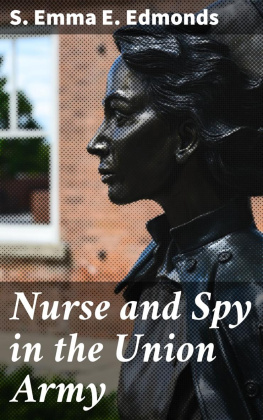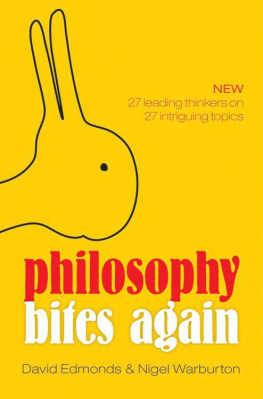This edition is published by BORODINO BOOKS www.pp-publishing.com
To join our mailing list for new titles or for issues with our books borodinobooks@gmail.com
Or on Facebook
Text originally published in 1947 under the same title.
Borodino Books 2018, all rights reserved. No part of this publication may be reproduced, stored in a retrieval system or transmitted by any means, electrical, mechanical or otherwise without the written permission of the copyright holder.
Publishers Note
Although in most cases we have retained the Authors original spelling and grammar to authentically reproduce the work of the Author and the original intent of such material, some additional notes and clarifications have been added for the modern readers benefit.
We have also made every effort to include all maps and illustrations of the original edition the limitations of formatting do not allow of including larger maps, we will upload as many of these maps as possible.
IN THE HANDS OF THE SENECAS
BY
WALTER D. EDMONDS
THE CAPTIVES
DYGARTSBUSH was the last settlement on the west of the Little Lakes District; but there was not a spot in it from which two cabins could be seen at the same time. It was too new for that. Most of the people had come in just before 1776, and their cabins stood in isolated clearings connected only by footpaths to the narrow track that led northeastward twenty miles to Fort Plain.
Altogether there were fifteen families. Though most of them were Scotch-Irish, they had arrived too late to come under the dominance of the Loyalist Johnsons and Butlers. There were also a few Palatine Germans from Schoharie, like Nicholas Dygart from whom the settlement took its name; but most of them were young married couples, like John Borst and his wife, Delia.
Westward the wilderness was unbroken Indian country except for the Edmeston Patent on the Unadilla. But the Edmeston people were kings people, and there was no intercourse between the two places. Dygartsbush was so hidden away that the first year of the war affected it almost not at all. A few of the young men joined the militia; one of the Kelly boys was killed at Oriskany. The Kellys, however, were not the kind of people to be greatly missed in a community. They were perpetually skirting the edge of trouble, either running the woods like Indians with their wild dark faces, or drinking their father into a stupor, or making up to the younger women.
But when the young men returned at the end of the campaign with news of Oriskany and the glorious surrender of Burgoyne at Saratoga, the settlement was so reassured that the people gave up all notion of building a stockade until the spring planting of 1778 should be completed. They did not get word of the early spring raids on Fairfield and Ephratah. They heard nothing of the battle and burning of Cobelskil east of them. There was no possibility of defense therefore, when, on the third of June, Dygartsbush was attacked by over seventy Indians.
The Indians surrounded the clearings individually just before suppertime on the third of June, while most of the men were still hoeing corn in the stump lots. A light spring rain was falling, and under cover of it a few people did manage to break into the woods. Whether these had escaped or been killed, the survivors who were taken prisoner had no way of telling except for the rain-soaked scalps their captors carried at their belts. They could not even tell how many of themselves had been captured, for, as they retired, the Indians divided their band into several parties.
The Indians were in a hurry. At the edge of the woods they divided their loot by the light of the burning cabin and made it into bundles for the prisoners to carry. There were only two men in this particular lot, Honus Kelly and his thirteen-year-old brother, Pete. The rest were women, from old Mrs. Staats, the mother of Nicholas Dygarts first wife, down to young Ellen Mitchel. She had been out hunting the Mitchel cow which had strayed nearly to Borsts and had consequently been picked up away from her family.
Every one of them had a load to carry. It took only a few minutes. The cabin burned with a high flame, casting out shadows from the stumps among the corn. The shooting was nearly overonly now and then a single report, followed by the shrill, bursting yell. The old Indian who had taken Delia in the doorway of the cabin half an hour before loaded her with her own blankets, her copper kettle, and her little mirror, that had been her wedding present from her mother. She accepted them dully, standing a little apart from the rest, a straight tall girl, nearly as tall as the old Indian, with a thick brown braid of hair that reached to the joints of her hips.
She had come to Dygartsbush only three weeks ago, having been married, altogether, less than a month. She knew none of the other prisoners well; she felt like a stranger in the community, who still spoke of her as Borsts young bride. Without John she would have felt herself lost, with no church bell anywhere to be heard, no sound but the endless drone of the insects, or the noise of the frogs at night. Even in the daytime the woods pressed against her, unless she could hear the ring of Johns axe.
That sound yet thrilled her. Though she might be baking at the stone oven in front of her door and he in the new lot he was clearing, out of sight and a hundred rods away, if she heard his axe she had but to close her eyes, even at noon, and feel the strength of his hands about her, and smell the quick strong masculine smell of his body.
He had gone away the night before to Fort Plain after flour, carrying the grist bag on his shoulder, and she had expected him back for a late supper. She had planned to start it cooking an hour after sunset, guessing the time, for they had no clock, but she had hoped he might be earlier. Her whole being had been tensely alert for the sound of his returning feet.
When she had heard the stick break and had gone to the door, she had seen the head of the Indian in the dim white of the chokecherry bloom on the edge of the stump lot. His little eyes were like small animals, questing here and there to cover the clearing and then fastening upon herself. Even when he stepped out of the brush and raised his hand to his mouth she had not been able to move. But at the first ascending quaver of his yell she had tried to bolt round the cabin.
He came after her, lumbering like a bear with his big stomach, but ugly and swift, catching her by her hair and jerking her back. Then he had finished his yell, his knees bending under him, jerking her head slightly, while two younger Indians ran down the slope from the back of the cabin. The three of them crowded close, so that she could see the shapes of their faces under the paint, and surrounded her with the rank, rain-soaked, greasy smell of their deerskins.













